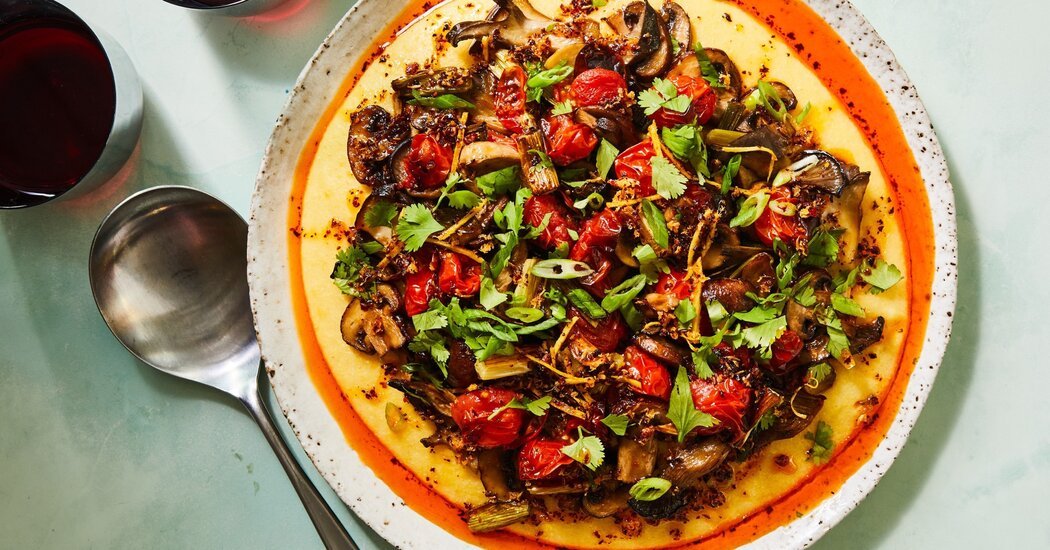[ad_1]
Recipe: Spicy Roasted Mushrooms With Polenta
Incidentally (or maybe not), using flavored oils is another example of how I can, quite literally, see flavor happening. The best illustration for this is cilbir, a Turkish dish of poached eggs, served huddled in a bowl over garlic yogurt. To finish it off, simmering butter gets an infusion of Aleppo pepper, painting it a bright scarlet red, and is then spooned over the pristine white yogurt. Try that mixture the next time you poach an egg, with or without yogurt, or drizzle some over a wintry soup in need of an extra kick.
Flavored oils, in which spices and other aromatics are briskly warmed up to release their flavors, are some of the most effective and seductive tools in my bag of kitchen tricks. The ability of hot oil to quickly penetrate dried spices and reactivate them to release dormant aromas and colors allows me to see this magical transformation happening in real time.
This technique is most developed in Indian cooking, where the word “tadka” (or “tarka”) is widely used both to describe the process of infusing an oil with a range of aromatics and to name the spiced oil itself. It can be prepared with ghee or coconut oil, nutty oils and more neutral ones, depending on the application.
For me, this technique’s attraction is in its ability to disperse flavor, and often texture, at different stages of cooking. For some soups, dals or stews, for example, I often start by frying some fresh aromatics, like onion, garlic and ginger, in plenty of oil, before adding crushed dried spices, like cumin, coriander or cardamom. I then set aside some of the oil and spices and carry on cooking. Only at the end, as I serve, do I spoon the reserved aromatic oil on top. This way, I get the mellow flavors of the aromatics in the background and those same spices in the foreground, with all their intensity, tempered only slightly by the initial cooking.
[ad_2]
